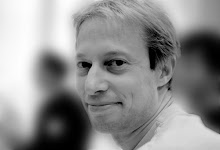Friday 23.nov. Kl. 12.30-16.30
Holmen, Aud. 2
Parametric Approaches II: Computation and material
An international symposium on the development of digital architecture. The symposium is for professionals and students. Organised by Centre for Information Technology and Architecture, Royal Danish Academy of Fine Arts, School of Architecture.
Date: Friday November 23rd, 2007
Time: 12:30 registration and coffee
13:00 Introduction and keynote by Mark Burry, SIAL, RMIT
Venue: The Royal Danish Academy of Fine Arts, School of Architecture, Auditorium 2
Digital practice can no longer be seen as separate from architecture. The means by which we design, produce and communicate the built environment is firmly set within digital media, from the software in which we design and detail, to the new Building Information Models that communicate and organise our building processes. In recent years the fabrication tools by which the built is realised are increasingly becoming digitised. Traditional industries such as manufacturers of wood frames, steel profiles and concrete elements are digitising their production tools allowing for new levels of detailing and the production of non standard series. As such, Computer Numerically Controlled (CNC) tools, such as laser cutters, milling machines and 3D printers are entering architectural practice no longer only as a modelling or prototyping environment, but as means to realise and build architecture.
The symposium Computation and Material discusses how new digital tools challenge the practices of designing and fabricating architecture. What happens to architectural design practice as craft becomes digital? How does the possibility of the bespoke change the thinking of repetition and series? How do digital tooling enable new relationships between the drawn and the built? And how do these practices instigate a challenge to the aesthetics of architecture? Within the symposium Computation and Material the Center for IT and Architecture invites international speakers to discuss the emergence of new digital production techniques and their practices. Show casing recent projects and discussing their historic framing in the crafts of building and drawing, practitioners as well as theoreticians will discuss the new international discourse, design paradigms and formal languages that are arising with these technologies.
Speakers
- Prof. Mark Burry, Director of the Spatial Information Architecture Laboratory (SIAL), RMIT Melbourne
- Prof. Neil Leach, Curator of the Beijing Biennial 2007, co-editor of Digital Tectonics and Professor of Architecture at University of Brighton
- Mark Gage, Head of Gage Clemenceau Studio and Ass. Prof. at Yale University School of Architecture
- Achim Menges. Partner of Ocean North, Studio Master at Architectural Association, London and Professor for Form Generation and Materialisation, University of Art and Design HfG Offenbach, Germany
- Prof. Mark Goulthorpe, Associate Professor MIT, Head of dECOI
Schedule
12:00 coffee
13:00 Mark Burry
14:00 Neil Leach
14:45 coffee
15:10 Mark Gage
15:55 Achim Menges
16:35 Debate
Context
The Centre for IT and Architecture (CITA) at the Royal Danish Academy of Fine Arts, School of Architecture exploring the emergent intersections between architecture and digital technologies. Identifying core research questions into how space and technology can be probed, CITA seeks to investigate how the current forming of a digital culture impacts on architectural thinking and practice. CITA examines how architecture is influenced by new digital design and production tools as well as the digital practices that are informing our societies culturally, socially and technologically. CITA is a cross disciplinary research environments consolidating new collaborations with partners from the fields of computer science, engineering, human computer interaction, robotics, artificial intelligence as well as the practice based fields of furniture design, fashion and textiles, industrial design, film, dance and interactive arts.
This autumn CITA is engaged in a series of parallel research and dissemination activities surrounding the Computation and Material symposium. These events, ranging from workshops, to seminars and conferences, invite students, researchers and practitioners to gain insight into the current international design practice.
In the autumn of 2007 CITA has co-organised and participated in:
- Performing Surfaces: a joint workshop with Prof Neil Leach, University of Brighton and Mette Ramsgard Thomsen/Norbert Palz, CITA
- Subdivision Constitutional, workshop and exhibition with Brennan Buck, Die Angewandte/Vienna, and Martin Tamke, CITA
- Computational Aesthetics a conjoint workshop and think tank, with Mark Gage, Yale University School of Architecture and Martin Tamke, CITA
- ArchiTronics, an exhibition event at DAC in which CITA presents the interactive work Calcification
- Genesis, lecture presentation at Seminar on Becoming in Art, Nature and Technology, Steno Museum, Aarhus
- Metabolistic Networks, workshop into textiles, electronics and architecture, ACADIA, Halifax 2007
- Dancing in Wired Natures, workshop into dance and technology questioning new digital ecologies and performative space. Critical Path, Sydney and Perth Institute of Contemporary Art, Perth
- Temporal Interactions a workshop with Mette Ramsgard Thomsen and Camille Utterbach, US, on interactive environments, embodied interfacing and space.
More Information can be obtained from http://cita.karch.dk/
Everybody is very welcome - please contact inst4@karch.dk to reserve a place.





